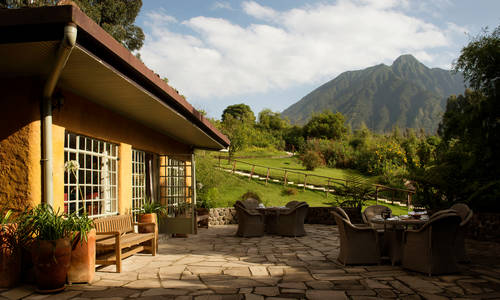Article content
8 August 2012 by Alex Stewart
Mid-august in the Masai Mara and the usually quiet Mara River is the focus of attention for people hoping to witness one of the most spectacular wildlife events on earth: the Great Migration. An endless search for food sees grazers go in search of fresh grass, drawn by the rains.
Hordes of restless wildebeest and zebra, some two million in total, take part in the annual trek through the plains of Tanzania's Serengeti National Park before crossing over into Kenya's Masai Mara in search of greener pastures. Thousands of other animals play their part too. The river crossing is the most traumatic part of the trek, with Nile crocodiles lying patiently amidst the rapids to pick off swimmers. If you only ever see one wildlife spectacle in the world make sure this is it.
The Great Migration
An annual event with no fixed schedule, the Great Migration is a continuous cycle. Spend time amongst the animals, take advantage of our photography tips and feel almost part of the show. Don't expect a fanfare opening though, or guaranteed deprture dates but do drop in at any point you choose to see the spectacle, or at a least a small portion of the performance.
The weather controls the herds and sends them in a giant clockwise circuit through the Serengeti and Masai Mara, tramping back and forth across borders and enduring bottlenecks and drama at the two main river crossings on route. Wildebeest are notoriously bad at sticking to timetables though and the vagaries of seasonal rains play havoc with planning; use the broad outline below to plot your perfect safari.
January-March
The herds settle on the short grass plains of the southern Serengeti in January, taking advantage of the fresh pasture following the short rains in November and December. Wldebeest, zebra and gazelle start to calve at the end of the month. Calving continues throughout February, with up to half a million wildebeest born in just two to three weeks. During this time the animals drift around the southern plains. By March the plains are heavily grazed and the animals must move on, encouraged by the sound of thunderstorms to the north and west, meaning rainfall and fresh grass. Follow the migration on a luxury mobile tented expedition with Serengeti Under Canvas and get up close to the animals. Alternatively stay at &Beyond's Kein Camp and enjoy bush walks into the Serengeti as well as game drives.
April-June
The herds plod slowly towards the wooded Western Corridor of the Serengeti as heavy rains start to fall in April. As the rains ease the herds continue to straggle into the Corridor, congregating close to the Grumeti River. By June the rains are over and the sound of thunderstorms is replaced by bellowing as the wildebeest begin to rut, the males fighting and rounding up females. By now the herd is huge and bunched up on the southern banks of the Grumeti River. The river crossing begins in the early weeks of June and intensifies as the month goes on. As the animals splash through the water they're often picked off by crocodiles, who gorge on the herd.
July-August
With the Grumeti behind them, the herds spread out and head north through the northern reaches of the Serengeti towards the fresh pasture of the Masai Mara. between them and the grasslands though lies the Mara River. The animals can cross as early as mid-June or can delay until late August. Typically though they launch themselves into the Mara River for a frenzied crossing around the middle of August, much to the delight of the crocodiles lying in wait.
September-October
Now in Kenya, the herds relax amidst the fresh grasslands of the Mara and eat well throughout September, ambling eastwards across a wide area in search of pasture. During this time, base yourself at Keekorok Lodge, situated directly on the path of the migration, or stay at the luxury Kichwa Tembo Tented Camp. During October their pace increases as they start to turn south in anticipation of the rain falling in the southern Serengeti and the fresh shoots that'll follow.
November-December
By the this time of year the long trek south is firmly under way. The herds gather momentum throughout November as they trek towards the plains, forming long lines stretching across the savannah as they work their way through Tanzania. By December they reach the southern Serengeti again, completing the circuit.
Facts and figures
On the plains you'll be accompanied by:
- 1.5 million wildebeest
- 500,000 Thomson's gazelle
- 200,000 zebra
- 15,000 eland
What else to see and do
After your excursions and exertions on the plains of Kenya or Tanzania, consider a trip to the coast or outlying islands of Zanzibar to relax, recharge and reminisce about what you've just seen and experienced. Of course the wildlife spotting can carry on here, with some superb snorkelling and diving in the warm Indian Ocean to be enjoyed in both locations.
If this article has sparked your interest why not check out our round-up of seven ways to see Africa like Attenborough or our recommenation of the best African safari experiences.











